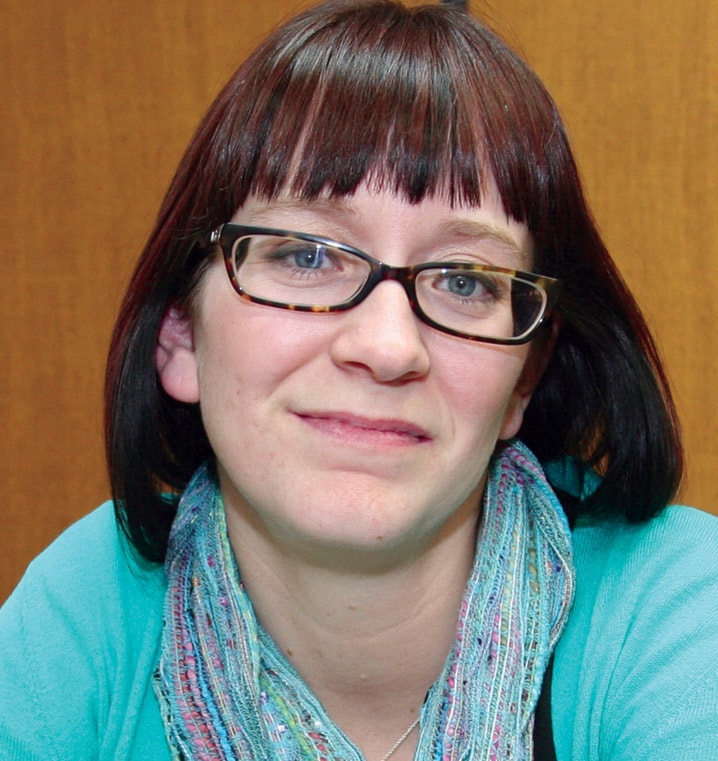A Red Deer midwife has her hands full when it comes to birthing babies in the community.
Jenn Bindon is expecting a little one of her own in April but said she won’t be taking the standard one-year maternity leave — she doesn’t want to part with her patients for that long.
“I will be off of attending births for about three months but I’ll still have clinics and just keep going. I’m so fortunate in having a job that I love. I don’t like having to hand off my clients to other midwives. They’re my people. I love them and care about them so it’s hard to give that up and I couldn’t imagine doing that for a whole year.”
Bindon, 36, started her career in 1999 as a nurse in the maternity ward of Red Deer Regional Hospital Centre but it was never a perfect fit.
“Our epidural rate was going up as well as the caesarian section rate and that wasn’t the kind of care I was comfortable giving.
“Not that it doesn’t have its place; it certainly does but at the rates we were starting to see, I knew I wanted something different.”
She started reading more about natural births, attending conferences and in 2008 she began her journey in midwifery education at the Midwives College of Utah through an online program.
She apprenticed with Barb Bodiguel of Blessing Way Midwifery in Rocky Mountain House and joined the group after she graduated in 2010 for a couple years.
In April 2012, Prairie Midwives was born in Red Deer, Bindon’s own practice.
Today, there are three midwives at Prairie and three at Blessing Way, making six for all of Central Alberta.
More are needed in the region as the wait lists for women seeking midwives continue to grow, Bindon said.
“In Red Deer alone based on our wait list and intake, we could probably be doing 10 per cent of the births but we’re only able to do one to two per cent right now,” she said.
Bindon believes there is enough work in the area for four more midwives.
Turning away 15 to 30 women on average every month because they just can’t take on any more patients breaks her heart, she said.
A full-time case load for a midwife is 40 births a year and Prairie Midwives has the funds to care for 116 women next year.
They receive $4,600 from the province for each “course of care,” a term referring to the collection of services provided to each patient throughout their pregnancies.
Alberta Health Services began providing full coverage for midwifery in 2009, making the services for a registered midwife in Alberta free.
This June, a three-year funding agreement with AHS was announced with a budget of $37 million. It is the first formal contract between the Alberta Association of Midwives and AHS.
Provincial funding was a big game changer, making midwifery more accessible. But it’s only the beginning, Bindon said.
“I think every woman at the very least deserves a conversation about midwifery care and if they’re eligible, they should be able to have it. So that’s another obstacle here, building practice and having enough midwives.”
There’s also the hurdle over the lack of public education about what midwives do, she said.
“People assume midwives only do home births or that you can’t have drugs if you have a midwife or that midwives aren’t educated.
“We have formal education. Many of us have previous degrees.
“Midwifery is baby and mother care. We care for women all the way through the pregnancy and six weeks postpartum,” Bindon said. “Safety is number one for us and we want women to have options.”
While she couldn’t imagine doing anything else, Bindon said it is a demanding profession when you are on call 24/7 and it can be a struggle to find that work/like balance in the beginning.
Bindon manages by having her Prairie Midwives clinic in the renovated basement of her home in Red Deer County, which will make it easier to continue working after the baby is born, as well as continuing to care for her eight-year-old daughter and nine-year-old stepson.
“It’s a lifestyle you have to commit to and your family has to commit to,” she said.
“It’s a very personal lifestyle choice. You connect with the whole family of your patients for a good lapse of time. So to me it’s important for people to see my dogs as they drive up to the house so it’s homey, comfortable — like going to your auntie’s farm.”
rfrancoeur@www.reddeeradvocate.com
